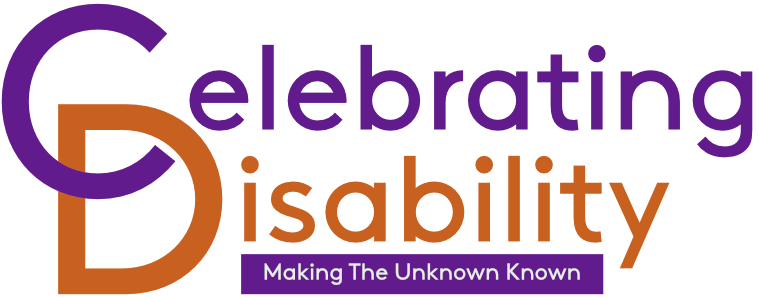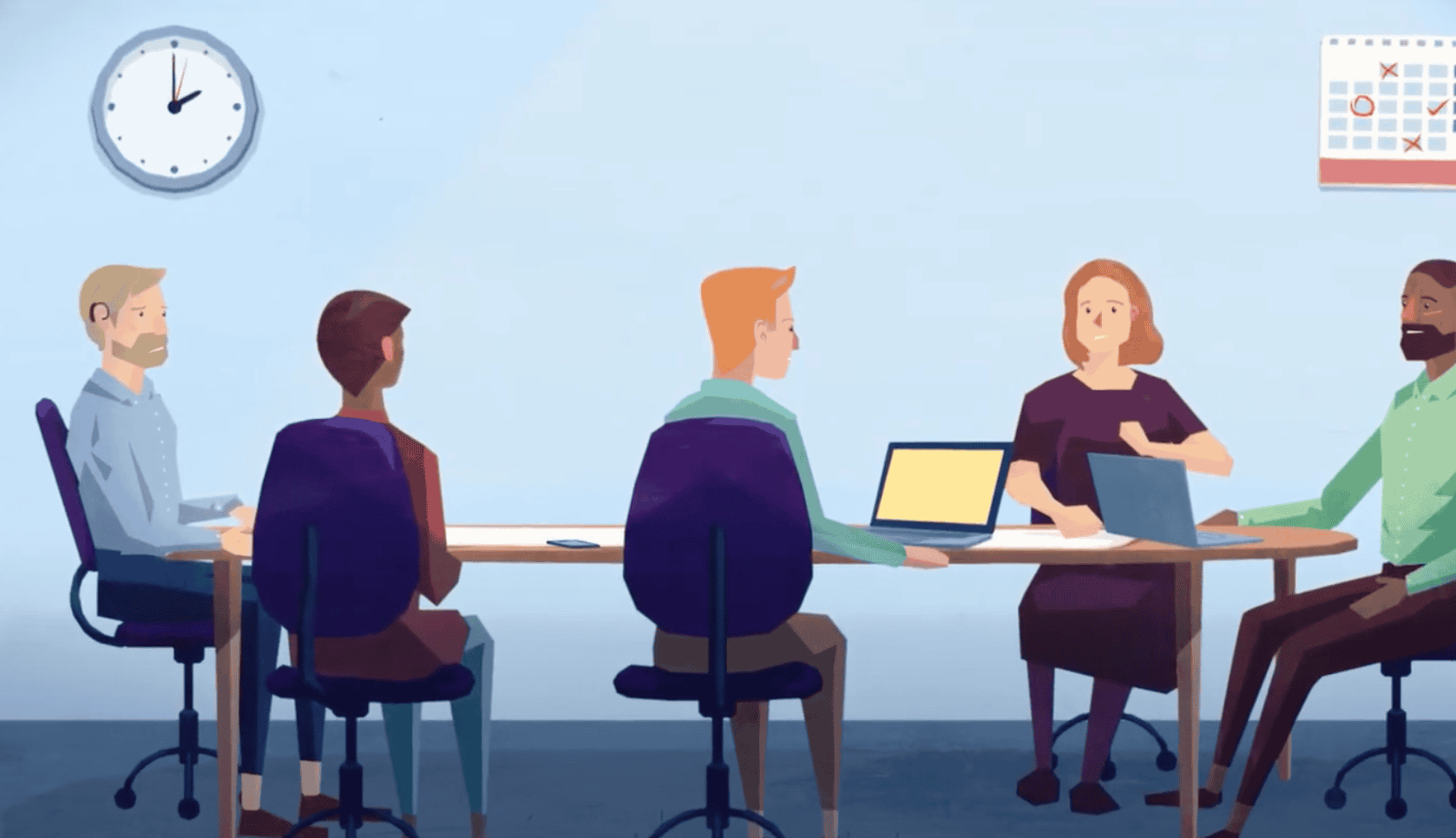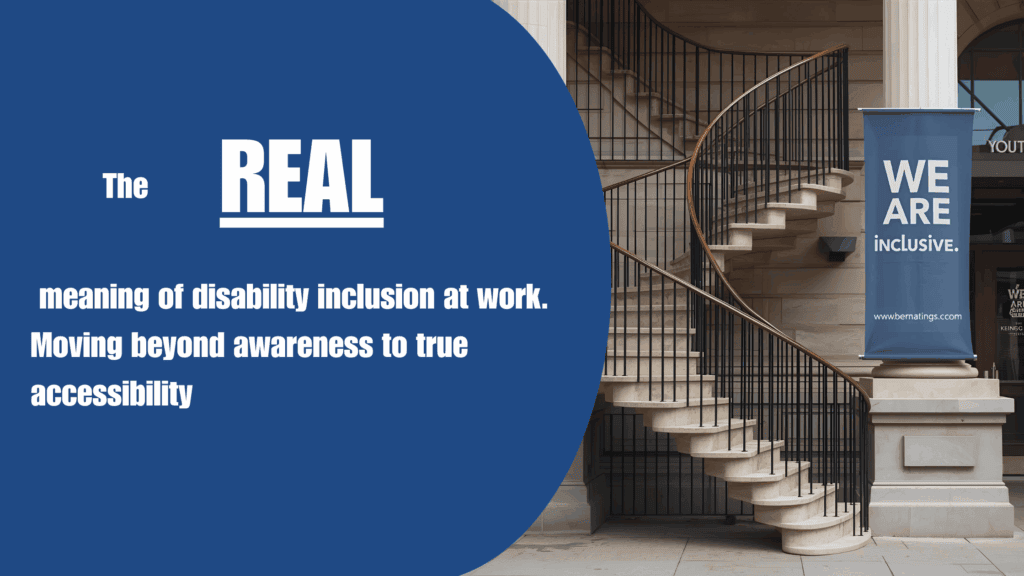Recruitment is often the first place businesses focus when thinking about disability inclusion. And it matters. If disabled people are not included in recruitment processes, they may never get the chance to bring their skills into the workplace. But recruitment is only one step. True inclusion is about what happens next. It is about how day to day practices, adjustments, and culture either enable or stop disabled people from achieving.
For leaders, EDI professionals, and L&D heads, the challenge is to recognise what stops disabled people from achieving at work, and to remove those barriers so businesses can focus on ensuring disabled people achieve. That is how inclusion becomes business as usual.
What Do We Mean by “Barriers”?
Through the social model of disability, disability is not created by a person’s impairment but by the barriers around them. In the workplace, barriers are anything that prevent disabled people from achieving their potential, contributing fully, or being recognised for their skills on equal terms.
Barriers are not always obvious. They are often cultural, systemic, or attitudinal. This is why senior leaders play such a critical role in challenging and reshaping them.
For further context on legal duties, see the Equality Act 2010: guidance.
Common Workplace Barriers
1. Attitudinal barriers
- Assumptions about what a disabled person can or cannot do.
- Talking over colleagues or avoiding conversations altogether.
- Overprotection that unintentionally limits growth.
2. Systemic barriers
- Rigid policies around working hours or performance measures.
- Processes that rely on one way of doing things, such as all staff meetings without breaks or inaccessible software.
- Adjustment processes that are complex or slow, discouraging colleagues from requesting support.
3. Environmental barriers
- Office layouts that make navigation difficult.
- Meeting rooms or breakout spaces without hearing support or quiet zones.
- Emergency procedures that overlook disabled colleagues.
4. Communication barriers
- Information shared only verbally or only in writing.
- Lack of accessible formats such as captions, large print, or plain language.
- Digital platforms or intranets that do not meet accessibility standards.
Why Leaders Need to Focus on Ensuring Disabled People Achieve
Removing barriers is not simply a matter of compliance or doing the right thing. It is a strategic decision with clear business outcomes. If barriers remain in place, they stop disabled people from achieving and prevent businesses from creating equitable opportunities for disabled employees.
1. Retention and engagement
When disabled colleagues face barriers, they may feel undervalued or disengaged. This drives turnover and results in the loss of skilled staff, along with the hidden costs of recruitment and retraining. A workplace that creates equitable opportunities for disabled employees fosters loyalty and long term engagement.
2. Productivity and performance
Workplace barriers mean employees are forced to work around obstacles instead of focusing on outcomes. This lowers productivity and increases frustration. Inclusive adjustments such as flexible working or accessible technology ensure disabled people achieve on equal terms. They also improve performance across entire teams.
3. Leadership confidence
When managers do not know how to talk about adjustments, they may avoid the conversation. This creates uncertainty for both parties and undermines trust. Leaders who are equipped with practical tools can initiate conversations that unlock potential. This ensures disabled people achieve while strengthening team cohesion.
4. Commercial resilience
Ignoring barriers restricts the pool of talent, ideas, and innovation. Inclusive businesses build resilience and agility by ensuring disabled employees contribute fully to growth. Creating equitable opportunities for disabled employees is not just socially responsible, it is commercially smart.
5. Brand and reputation
Reputation matters. Businesses that fail to support disabled colleagues risk being seen as exclusive or outdated. On the other hand, those that demonstrate a commitment to ensuring disabled people achieve send a clear signal of values to customers, clients, and investors. This strengthens their competitive edge.
Shifting from Barriers to Opportunities
The good news is that barriers can be dismantled. For leadership, this begins with three commitments:
- Listen and learn – Create safe spaces for disabled colleagues to share their experiences. Feedback must be heard, acted upon, and built into business processes.
- Act with agility – Treat adjustments as an enabler, not an exception. Quick, proactive responses show commitment to creating equitable opportunities.
- Embed inclusion – Inclusion cannot be an add on. It needs to be part of everyday systems, policies, and behaviours. This is how disabled people achieve consistently.
Moving Forward
Every business will face different challenges. All can benefit from reflecting on one central question:
“What might be unintentionally stopping disabled people from achieving in this business?”
For some, the answer may lie in leadership behaviours. For others, it may be hidden in processes, systems, or the physical environment. Whatever the case, when businesses act with intent, three outcomes follow:
- Disabled colleagues feel valued, supported, and able to thrive.
- Managers gain confidence in leading inclusive teams.
- Businesses create equitable opportunities for disabled employees, and reap the rewards of a culture where everyone can achieve.
Recruitment opens the door. But it is the day to day experience of work, the adjustments, the culture, the conversations, that ensures disabled people achieve, progress, and thrive.
Ready to take the next step?
Download our free resource: How to Consider Proactive Adjustments. This practical guide helps leaders and managers anticipate barriers, focus on role outcomes, and create equitable opportunities for disabled employees.




